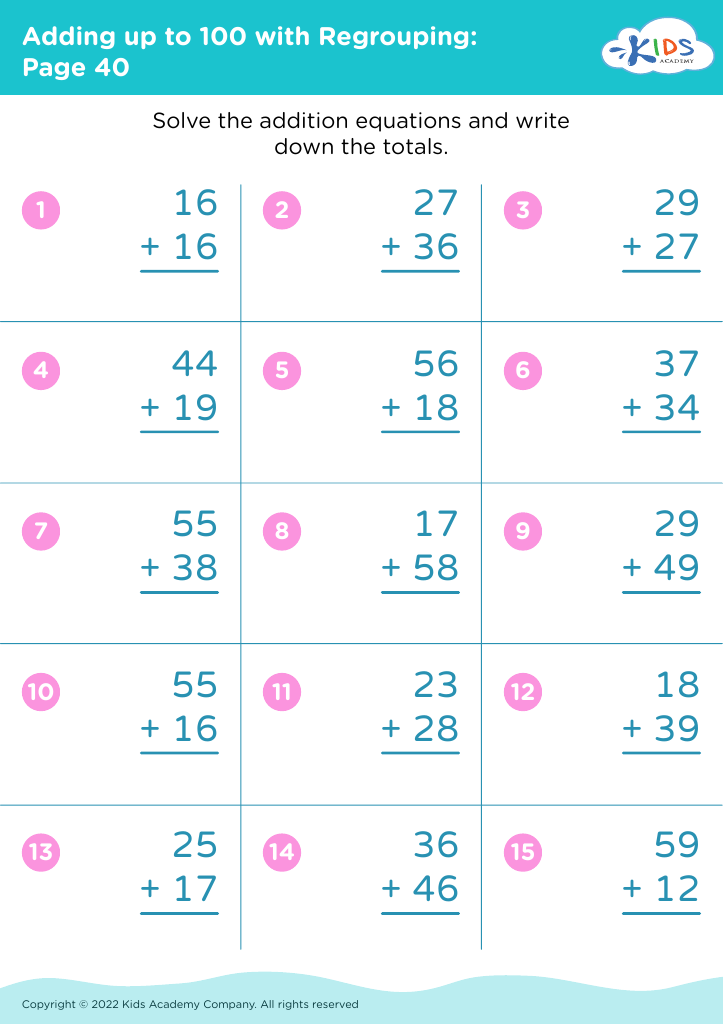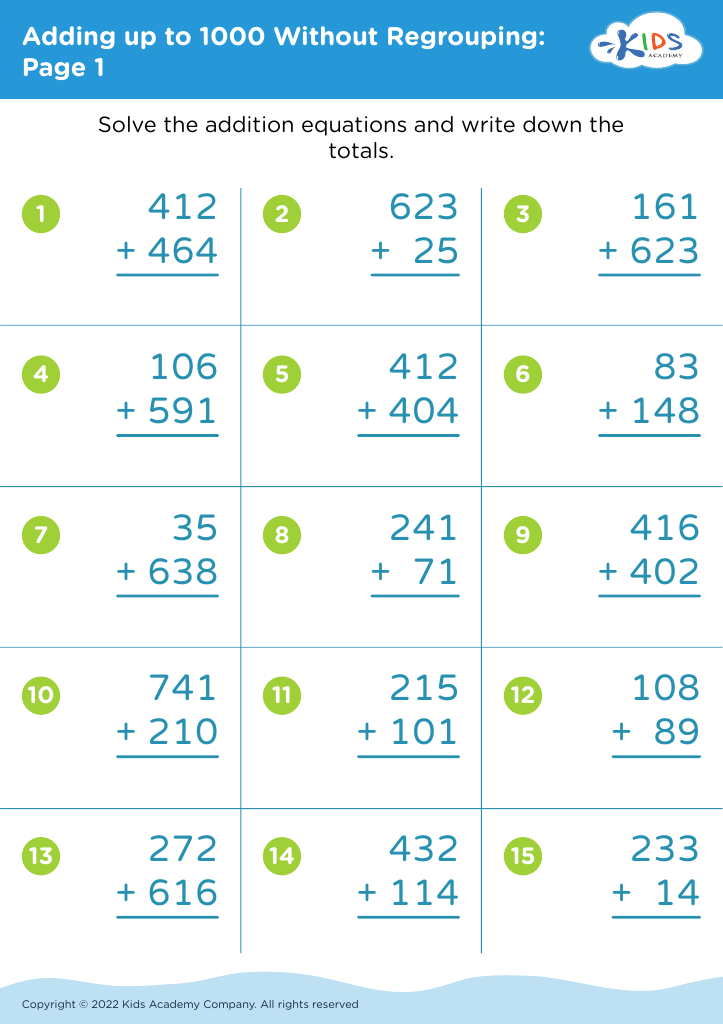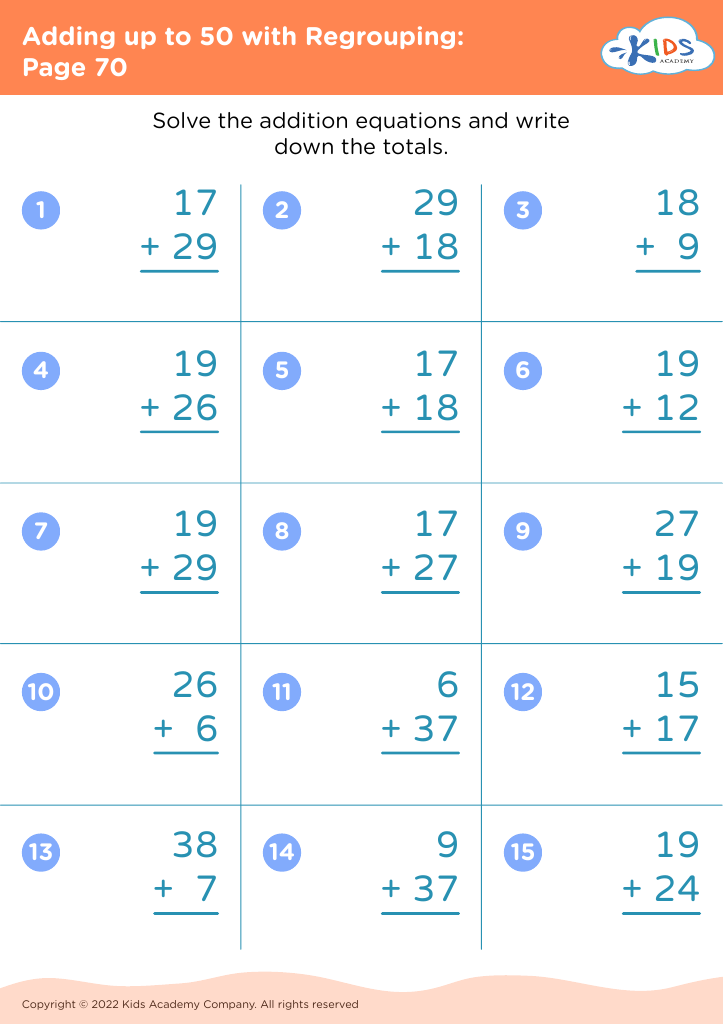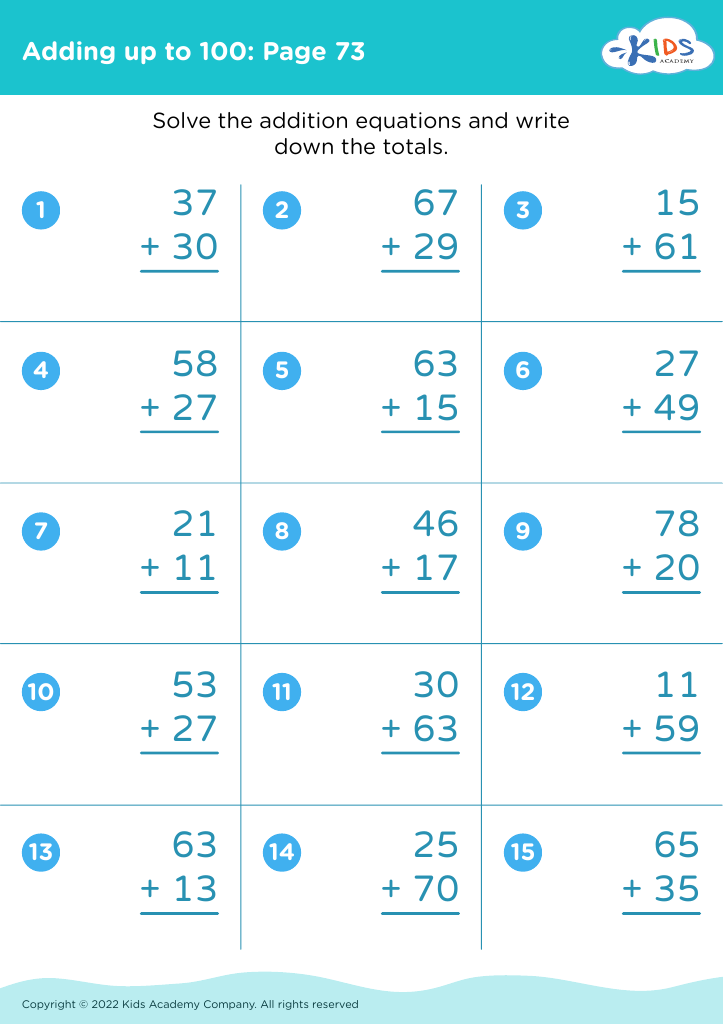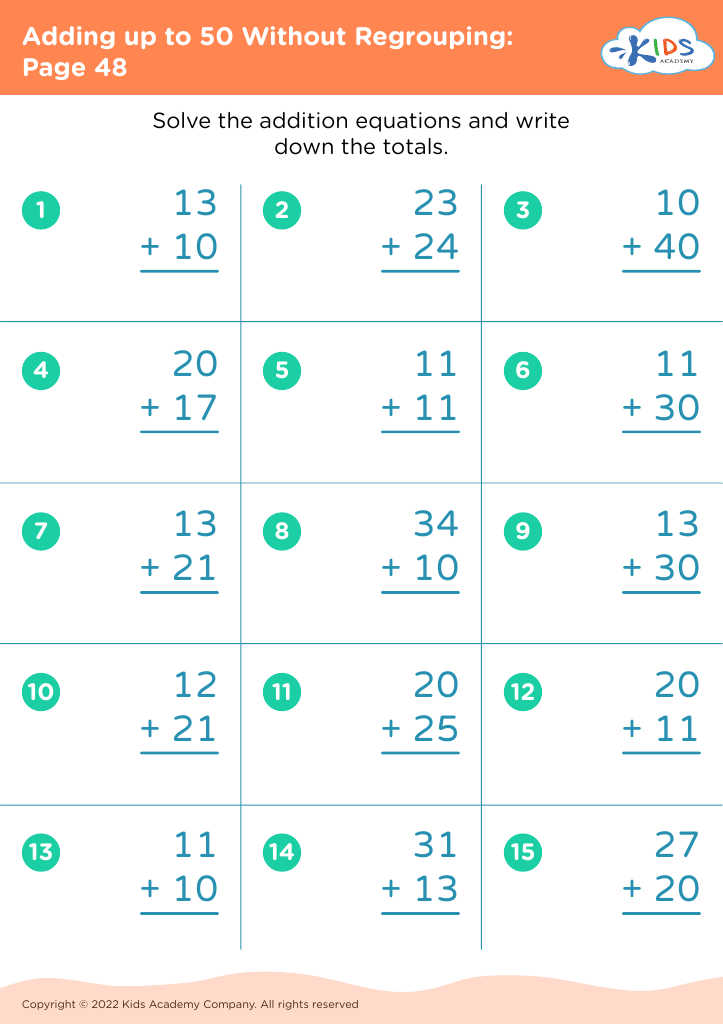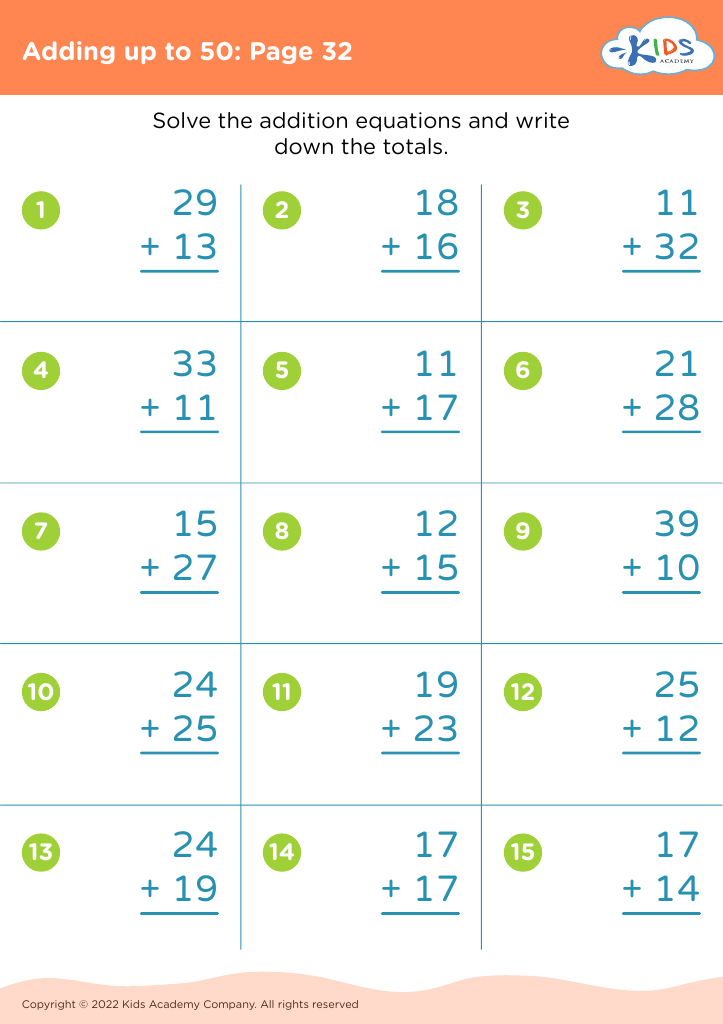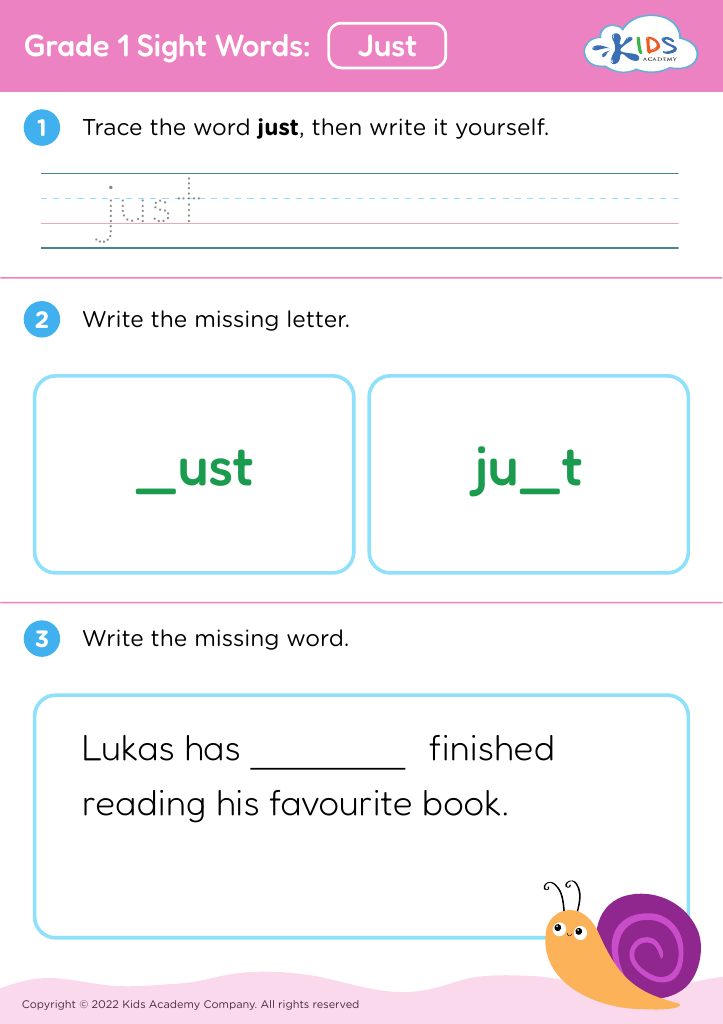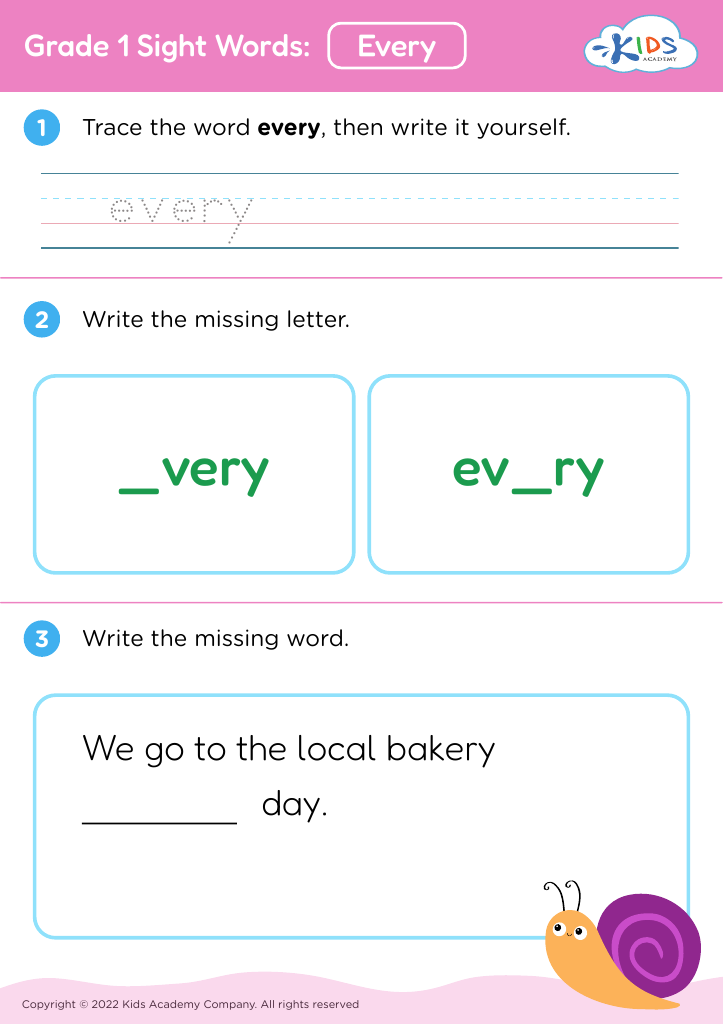Comparing quantities Worksheets for 7-Year-Olds
11 filtered results
-
From - To
Our "Comparing Quantities Worksheets for 7-Year-Olds" are designed to enhance your child's math skills through fun and engaging activities. These printable worksheets help children develop a strong understanding of comparing numbers, learning concepts such as greater than, less than, and equal to. With vivid illustrations and a variety of exercises, kids will enjoy honing their skills while building a solid foundation in mathematical reasoning. Perfect for home or classroom use, these worksheets promise to spark a love for math through interactive and enjoyable learning experiences tailored specifically for 7-year-olds.


Comparing Number Representations Worksheet


Fruit Math: Picture Graphs Worksheet
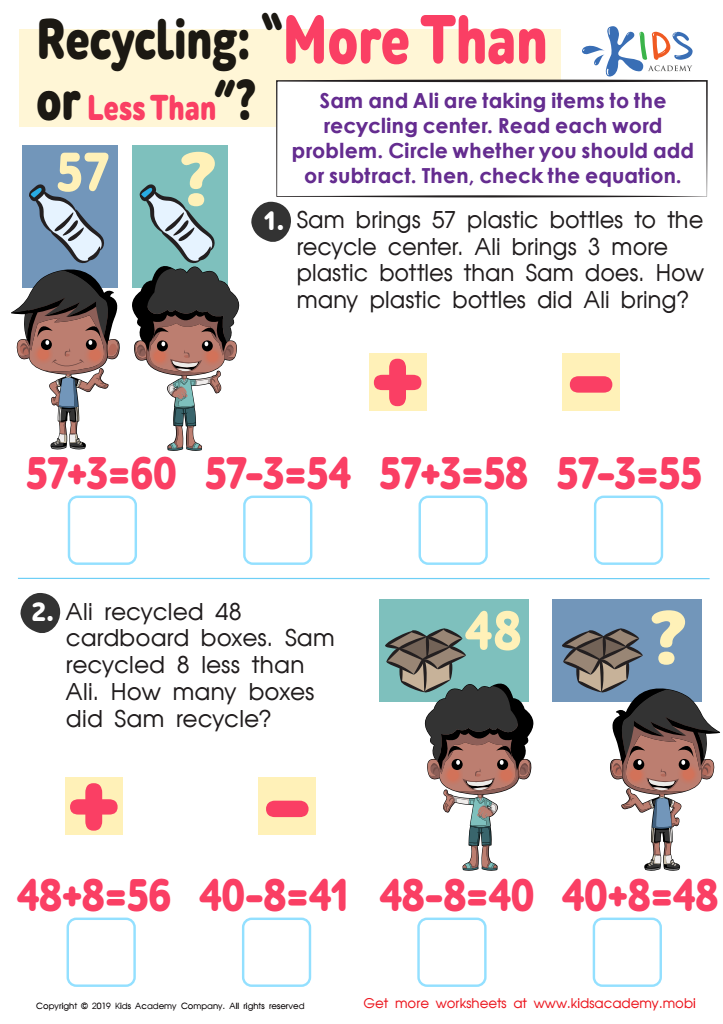

Recycling - More or Less Worksheet
Comparing quantities is an essential skill for 7-year-olds, and parents and teachers should prioritize it because it lays a crucial foundation for mathematical understanding and everyday problem-solving. At this age, children are starting to grasp the concepts of numbers, counting, and simple arithmetic, and comparing quantities helps solidify these foundational concepts.
When children compare quantities, they learn to identify relationships between different sets of objects, whether they are comparing heights, weights, lengths, or numbers. This skill encourages logical thinking, reasoning, and decision-making—all critical abilities for future academic success. For instance, understanding which group has more objects helps in learning addition and subtraction, promoting a clear comprehension of basic mathematical operations.
Moreover, comparing quantities fosters critical thinking and analytical skills. It enables children to understand differences and similarities, make estimations, and engage in discussions that enhance their communication abilities. These skills are not only vital for math but also for subjects like science and even daily activities, like distributing snacks evenly or understanding time intervals.
By investing time in teaching and reinforcing the concept of comparing quantities, parents and teachers help children develop confidence in their abilities, setting them up for long-term academic achievement and practical life skills.

 Assign to My Students
Assign to My Students
